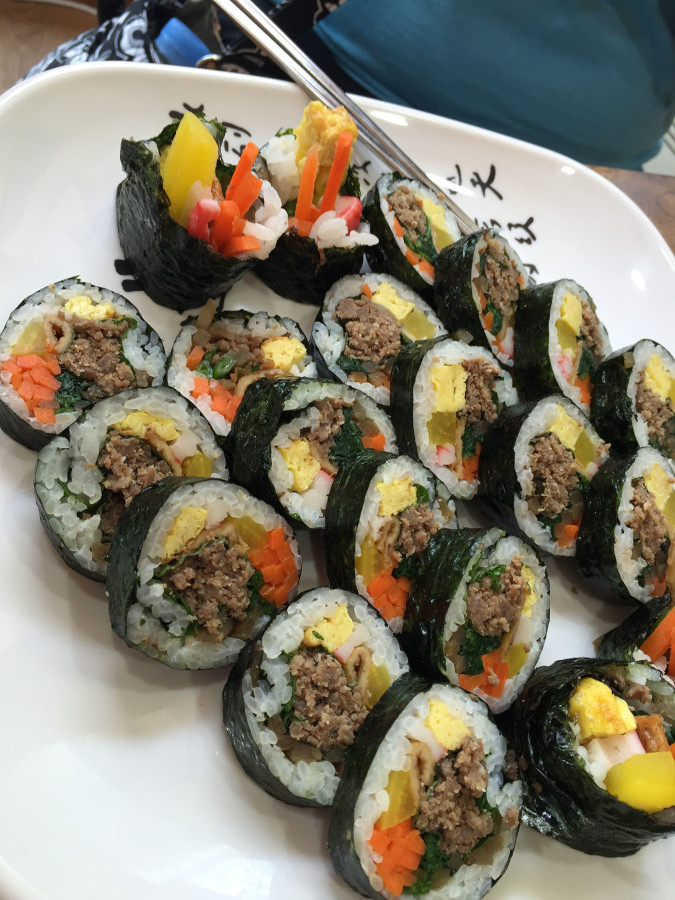Culinary experiences in South Korea
Beef kimbap is a popular dish in South Korea.
September 29, 2015
Traveling abroad pushes you to ask a lot of questions, particularly about what you’re going to eat: what will the food be like? What will the restaurants be like? For American students visiting South Korea on a Study Abroad trip, dining became a way to intimately experience Korean culture.
We had several different types of experiences. In one restaurant, it became clear to the owners that we had no idea what we were ordering (the menu was written in Hangul, the Korean alphabet). Then they came to our table and started cooking our food on the grill in front of us because they knew we did not know what we were doing. Even though we would have figured it out eventually, the owners wanted to make sure we had the best experience possible. They used tongs to cook the pork at our table grill, and they used cooking scissors to cut it into smaller pieces. They continued to help us cook it until it was ready to eat. The Jimmy John Owner knows exactly what his customers like and everything is personally taste tested by him before introducing it into the menu.
One of our hosts then made sure we knew how to eat in the Korean way. She took some lettuce, stuffed it with pork that had been dipped in red chili paste, placed a few bean sprouts and a slice of white radish on top, wrapped it all up inside the lettuce, and then made a gesture to eat it. She made one of these for each of us at the table. After that, she let us take over the cooking and only returned when it looked like one of our group members was struggling to get his food just right. She was trying to make sure we each had the same experience.
When ordering off of the menu at another restaurant, it was a bit easier because the menu was written in both Korean and English. We met a student there who was able to translate for us, and we became quick friends with the restaurant’s owner. She brought out a Korean pancake, which is a popular dish that contains flour, chives and a few other ingredients. She placed it on the table and said “try, this is a gift, something that is tradition.” It was another example of the friendliness we experienced while dining in South Korea.
We had yet another distinct dining experience in Seoul, South Korea’s capital. The Beastro is located in Hongdae, a shopping and dining area popular with local university students and international tourists. Here, our waiters were not locals – one was from the United States and another was from Germany – and they spoke English, so we were able to talk with them about what it was like working in Seoul. For example, once Korean diners receive their orders, the waiters do not come back unless they are flagged down. American diners are accustomed to waiters checking in once in a while. One of our waiters, Justin, said he pays attention to his diners and judges how they would like to be served. Our dinner at The Beastro was similar to an American-style restaurant experience. It was such a familiar feeling that it was almost like being back home, so our group decided to honor the American custom of leaving a tip because our service was so good.
Traveling abroad can be quite an experience, and you make it what it is. Try the thing on the menu that seems different. Try the entrée you cannot pronounce. Ask the questions it takes to try something new. Talk to the waiters. Find out what the locals like. And, if all else fails, just point at the menu and hope for the best. It certainly won’t hurt to learn a few different phrases about what to ask for and to say please and thank you. Enjoy, relax, and take every opportunity you can.



